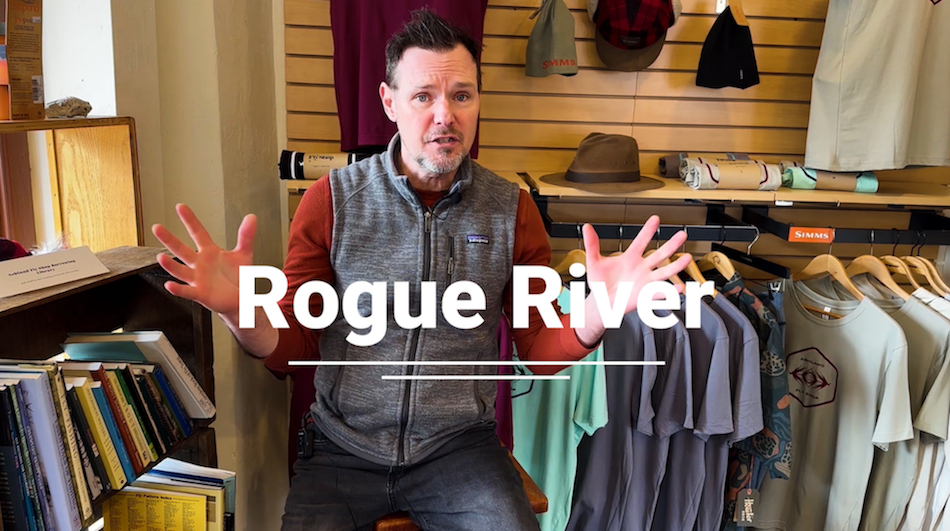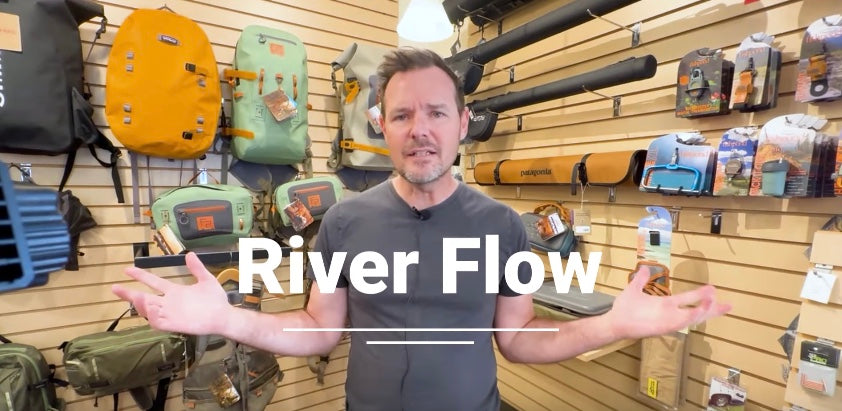Your Cart is Empty
free shipping on all domestic orders over $75
Article by Matt Katibah. Images by Marcus Mattioli.

Across the Pacific Northwest winter steelhead are entering their home rivers, and not far behind are the die-hard anglers that pursue them. To some, winter brings less opportunity to pursue steelhead as they wait for the classic, broad, swing runs of the big rivers to come in to shape. Even if one is willing to put in the time in high water, limiting yourself to the most accessible runs and rivers is going to limit your opportunity for an encounter with these special fish. I find one of the more common reasons for anglers to succumb to this handicap is a lack of confidence in tight quarters. Whether its small water that lends little to the classic down and across swing, or a run where the trees and undergrowth seems to grow closer and closer until it’s all you can do to flip your line downstream before the next cast, we all can struggle when the conditions go south.
Enter the Switch rod.

So, what is a Switch rod?
To keep things simple, I’ll call anything from 10’6”-11’11” a Switch rod. Above that, you’re into the short end of full size Spey rods, and below you’re just fishing a long single hander. When the Switch rod craze first came about, these rods were marketed as the ultimate all around fly rod. Overhead cast with one or two hands, roll cast, Spey cast with one or two hands- they could do it all! However, as time went on, the design of the rods changed. Today we have a rod that’s length is somewhere in the middle, and generally has a taper suited towards Spey casting. For me, a Switch rod is a mini Spey set up and I fish the same type of lines and tips, and swing the same big flies on Switch rods as I do my full Speys.
Where should I use it?
An example of this would be any small river or creek. One of my absolute favorite things to do after the first winter storms hit the Coast is to hike up the banks of Coastal and inland streams alike that have wild runs of steelhead. The water is small, the runs are atypical, and it is extremely tight quarters. Its winter, the water is high and cold and I know I need to get my fly down fast and keep it there, but the fish aren’t out in the open on the flats today. The water that’s calling to me as I make my way deeper and deeper in to the rainforest is in some of the densest undergrowth I’ve ever seen. A ledge jutting out from the bank lends five feet between my back and the blackberries. Meanwhile there are tree limbs only a few feet above my head. That kind of run is no place for a custom made 13’4 ¾” 7.62oz Spey rod with Koa wood reel seat and feather inlays. Sorry, it’s just not going to happen.

At the same time, if those smaller waters are getting just a little too clear for my liking, I can jump in the truck and drive over to a bigger river and fish the soft inside bends where I expect fish to be traveling upstream in the turbid flows. If I happen to fish my way down and find myself backed up to the willows that same short Switch rod I was using to access small water will help me to stay in the game again. Since I have a shorter line and rod, I don’t need to put as much line behind me as I would with something a foot or two longer.

The X
Between now and the first time I picked up a Switch rod I’ve had the chance to play around with a lot of different makes and models, in different lengths and paired with different lines. Through all the casting and fishing, and even a few fish, I’ve settled on one rod to do it all. For me that rod is the Sage X 8110 Switch rod; coming in at 11’0” for an 8wt this rod is the winter steelheader’s dream, and for more reasons than one. First of all, your chances of encountering a BIG fish are much higher in the winter. Being an 8wt, this rod has all the power you need to move those stubborn fish and since it’s a good 2 feet shorter than a standard Spey rod, I feel like I have a lot more fighting power and leverage on a big fish. For example, this rod has landed Chinook salmon upwards of 25lbs less than 5 miles from the Sea. To me that says this is a tool that I need to have when I’m targeting a big fish.
At only 11 feet, this rod is short enough to make a functioning Skagit-style cast even when you have obstructions all around you. As mentioned above this is a really stout fast action fly rod and because of that I recommend over lining this particular rod by 50-75grs above suggested weight. By doing so you give yourself a more connected feeling to your cast, even when you have to make unorthodox maneuvers. Not to mention the heavier line makes it much easier to cast the heaviest of flies and sink tips with minimal space behind and around. With a set up like this an angler can go from fishing a long leader and the heaviest of flies in a deep bucket to swinging a weightless bug and 10ft of T-11 on the gravel bars with minimal adjustments.

This leads me into my final selling point on Switch rods and specifically the X: its light! I mean really light. When I think of what makes the difference between catching and not catching in the winter months, I think one of the most important things is spending as much time on the water as you can. It’s absolutely critical, because as we should all know if your fly is dry, you won’t get bit. Having a rod that’s light in the hand makes all the difference in the world when it comes to fishing as hard as possible. I can use myself as an example here: Say I’m going fishing and I bring two rods, a 13’ Spey and an 11’ Switch, I guarantee that if I fish the 13’ rod starting first thing in the morning I’ll be battling myself to keep fishing by 2pm. I’ll probably push through the fatigue and keep fishing; however it won’t be nearly as fun. Fishing is supposed to be fun, so I prefer a rod that will let me fish longer and harder while enjoying my time for the whole day.
Now, it may be true that there is no one rod that can really do everything- odds are if you’re reading this you already have a few lying around. I’m not suggesting that if you fish a Switch rod you’re guaranteed to catch more fish or make prettier casts. The point is, if you want to fish as much as possible, have as much fun as you can, and give yourself more options for fishable water then you may want to find a place in your arsenal for a Switch rod like the Sage X.
Click Here to Check Out The Sage X Switch
Matt Katibah is an avid steelhead fisherman, spey caster, and guide on the Rogue River, Grand Ronde, and Alaska.

A February fishing report from Will, covering current and upcoming river and weather conditions on the Rogue, Applegate, Umpqua, and several rivers in northern California!

